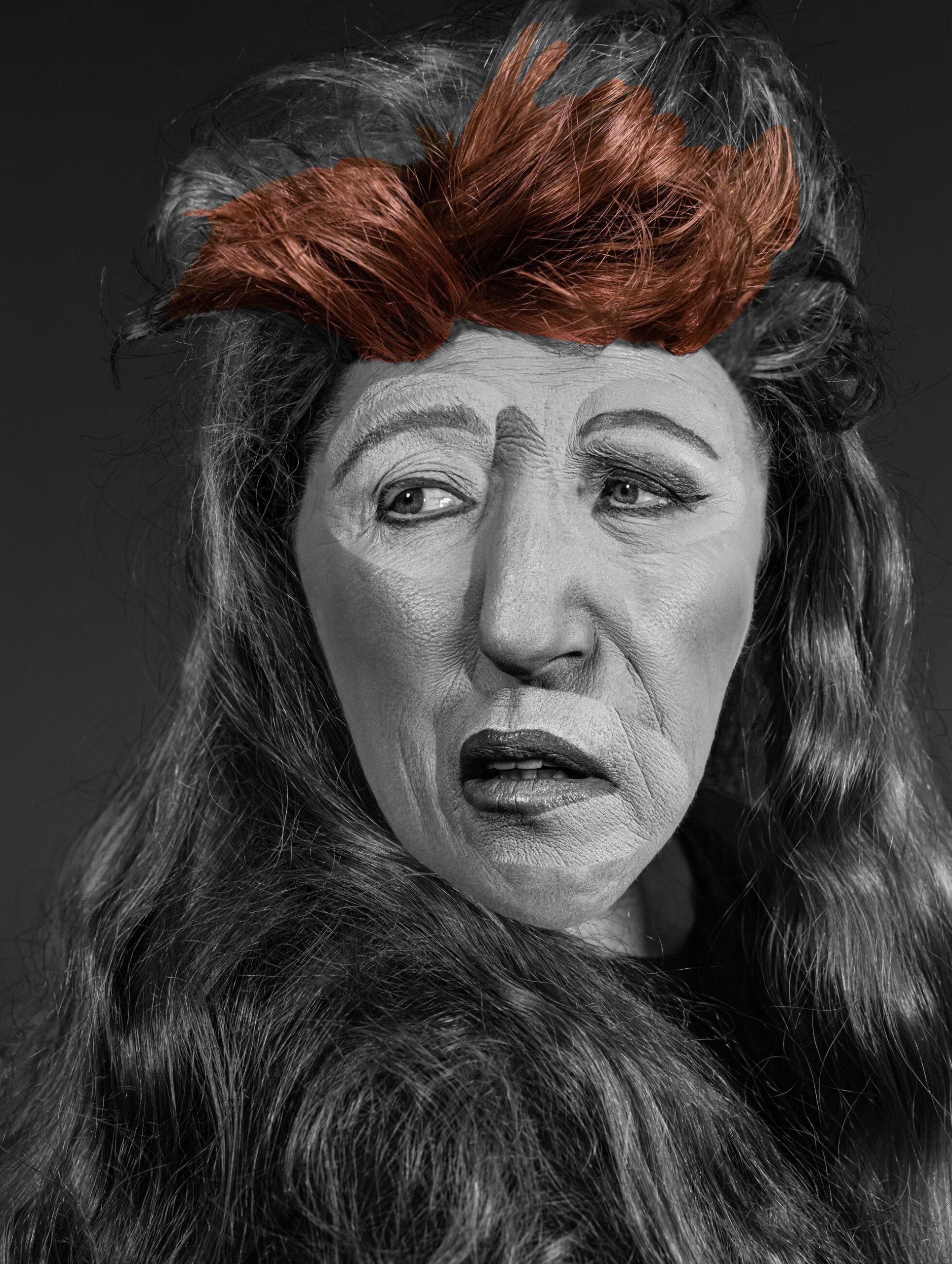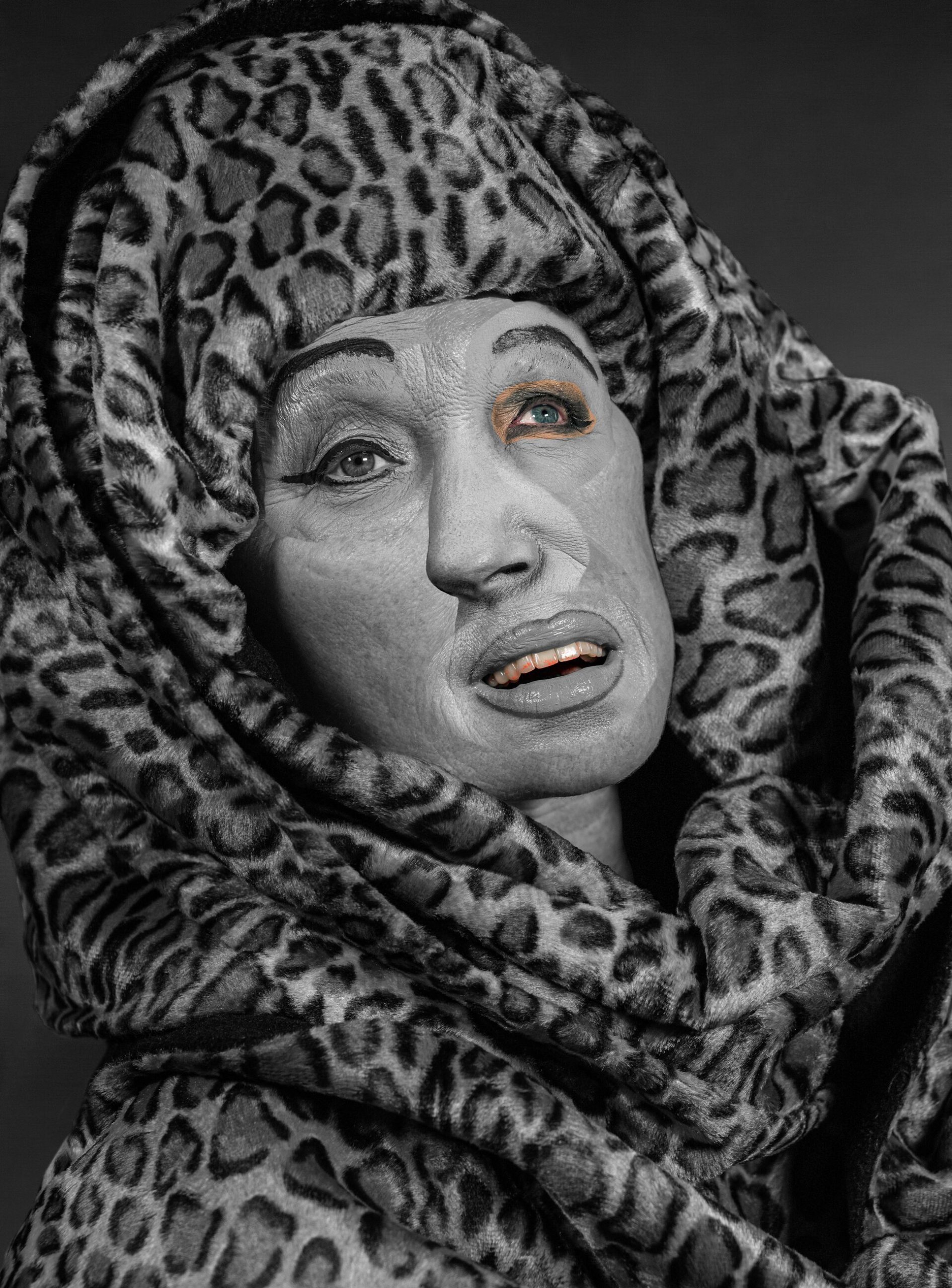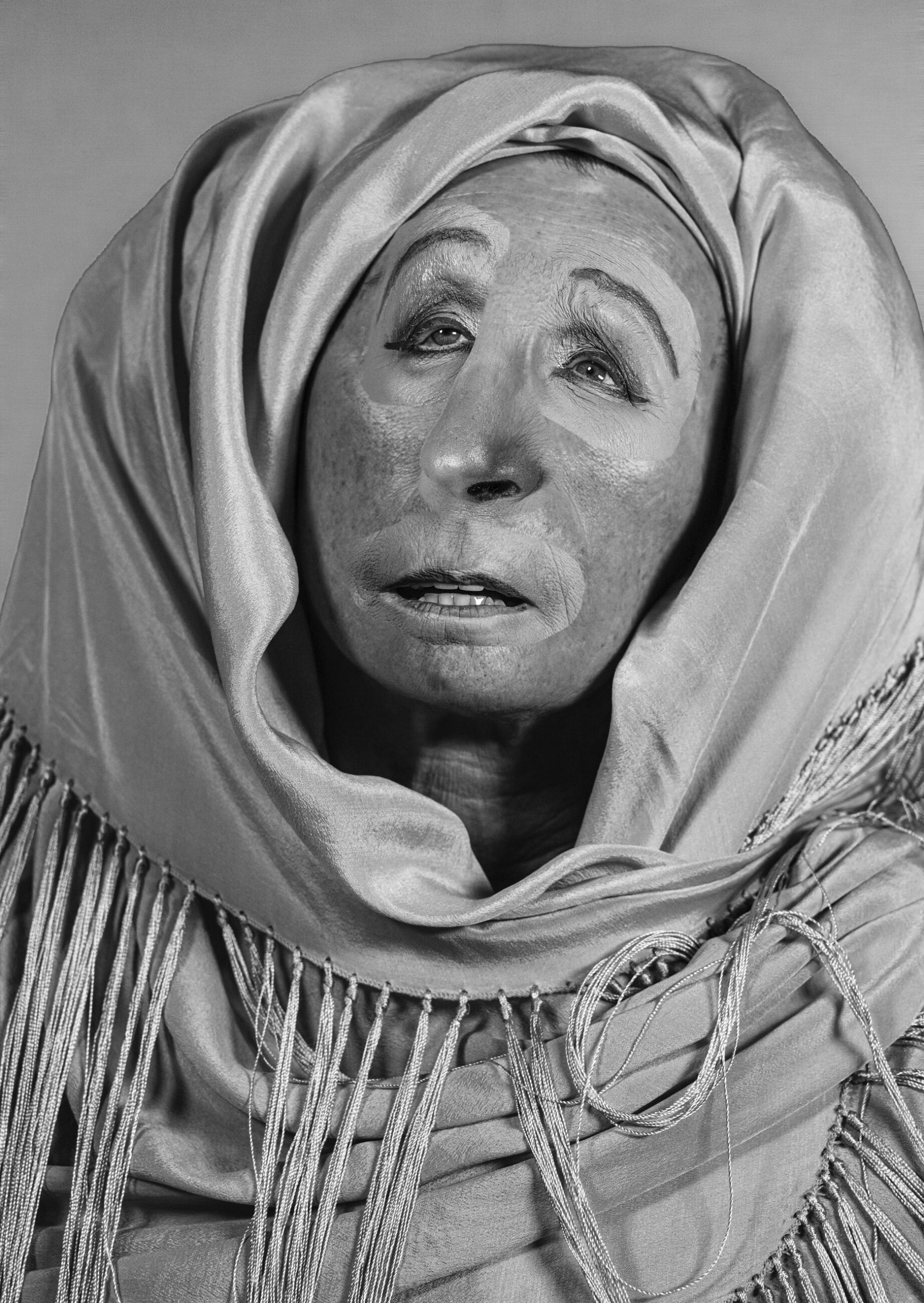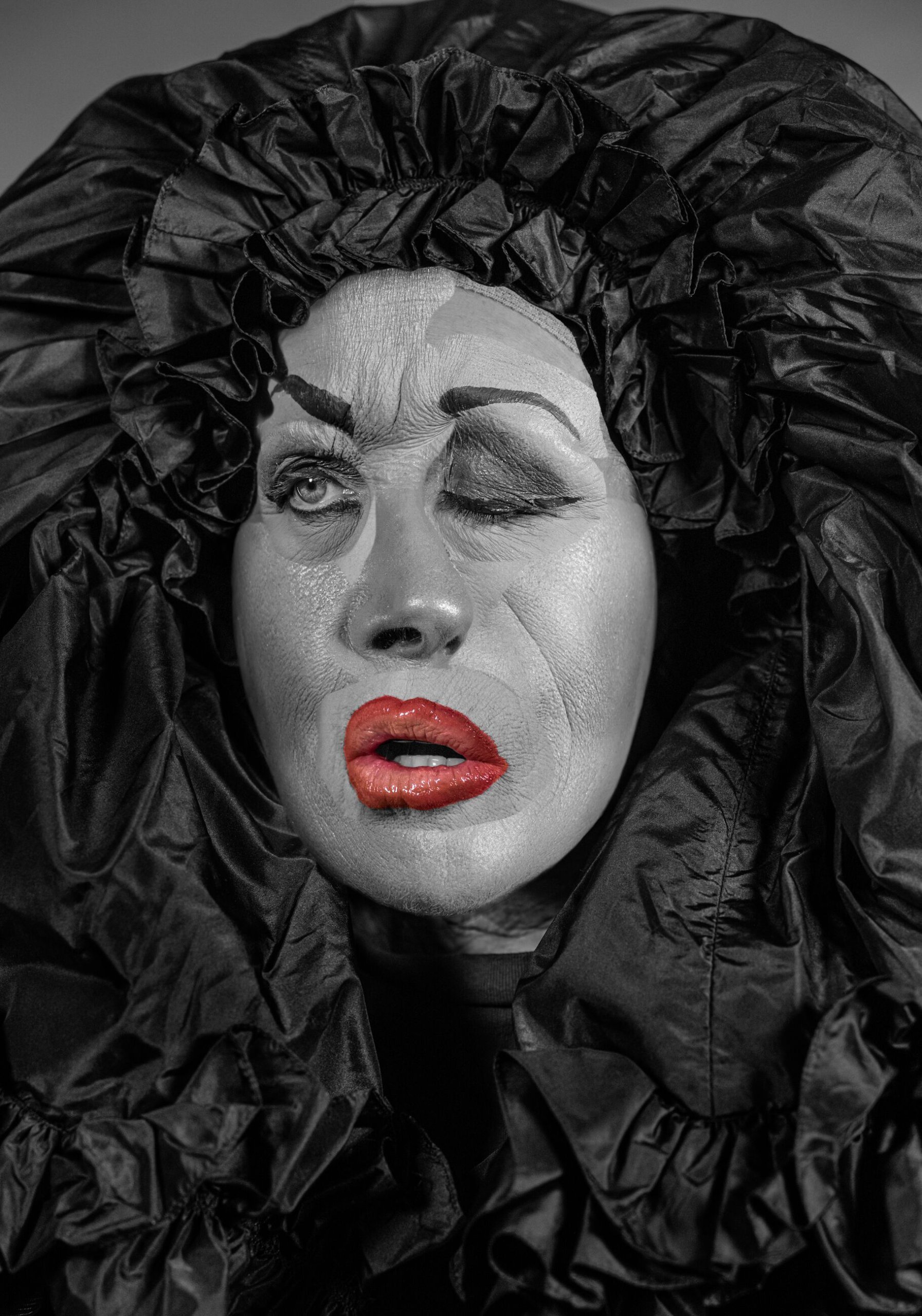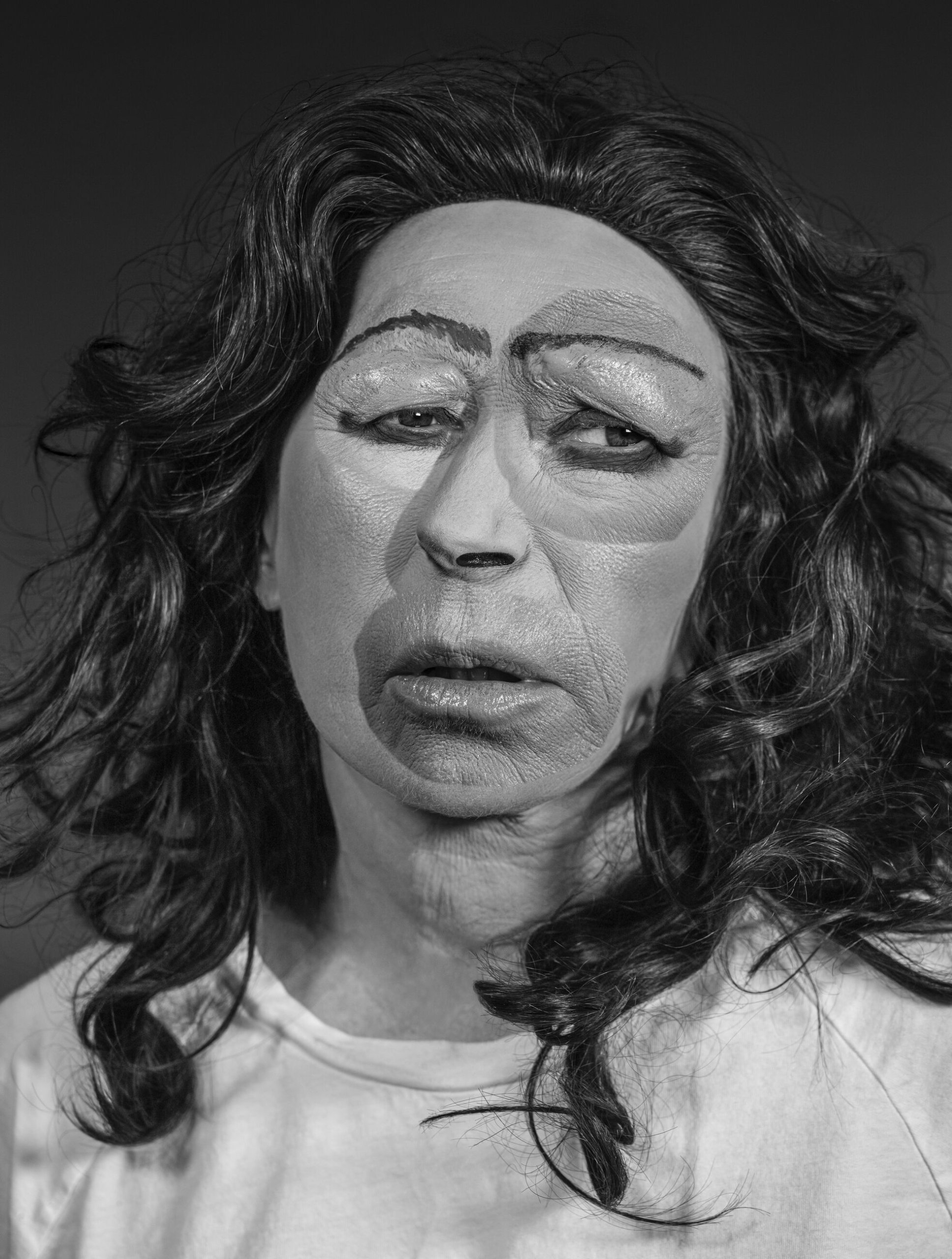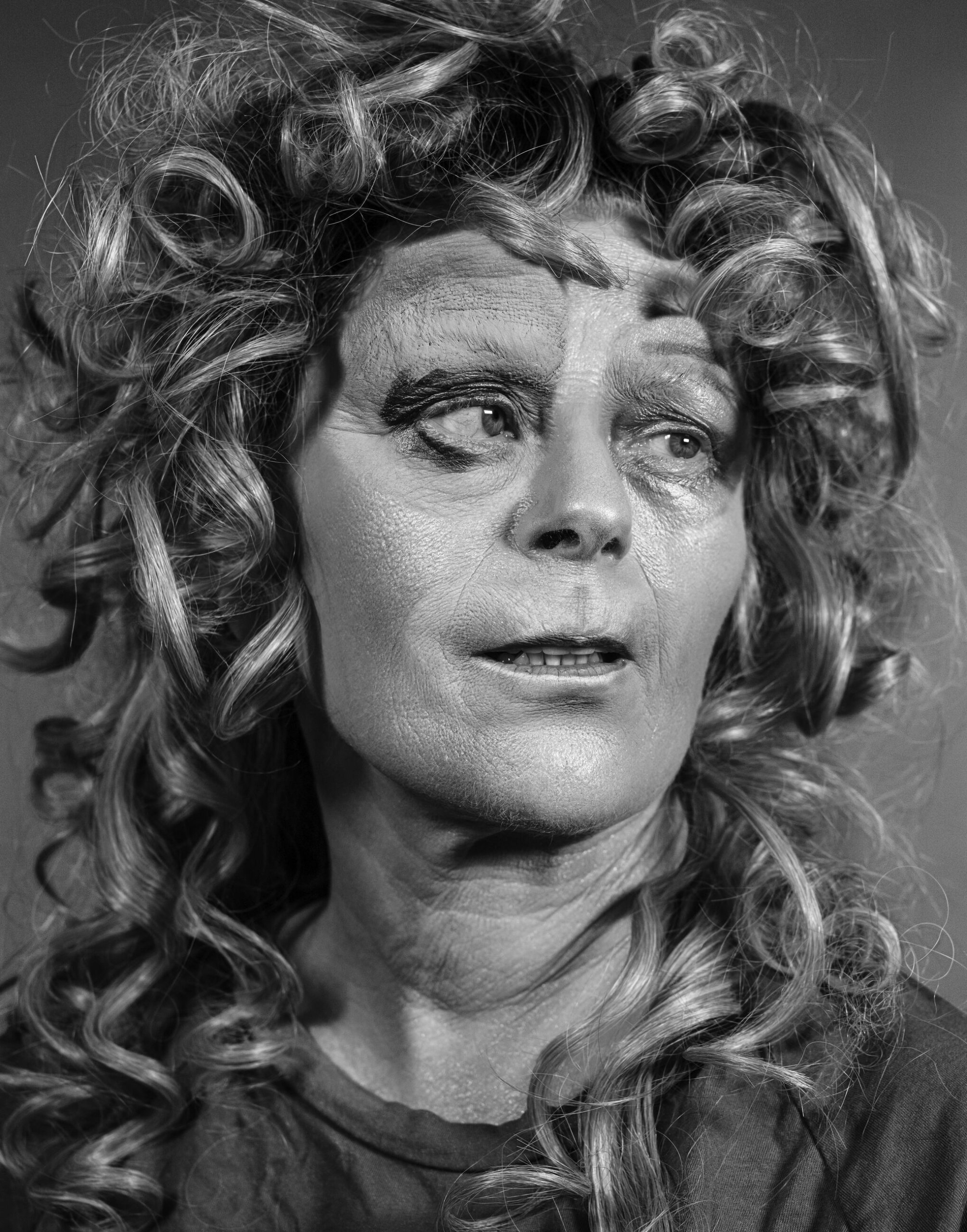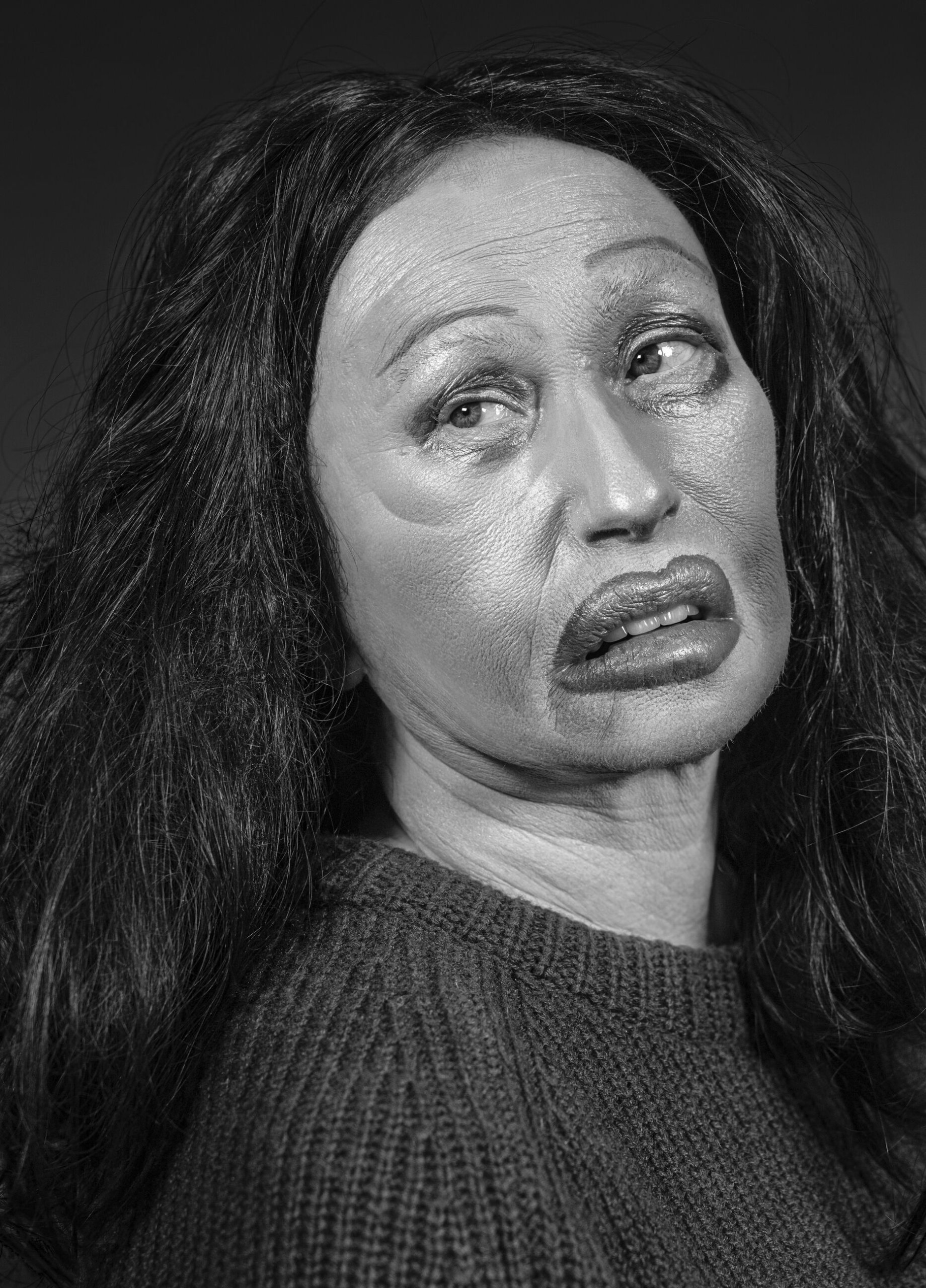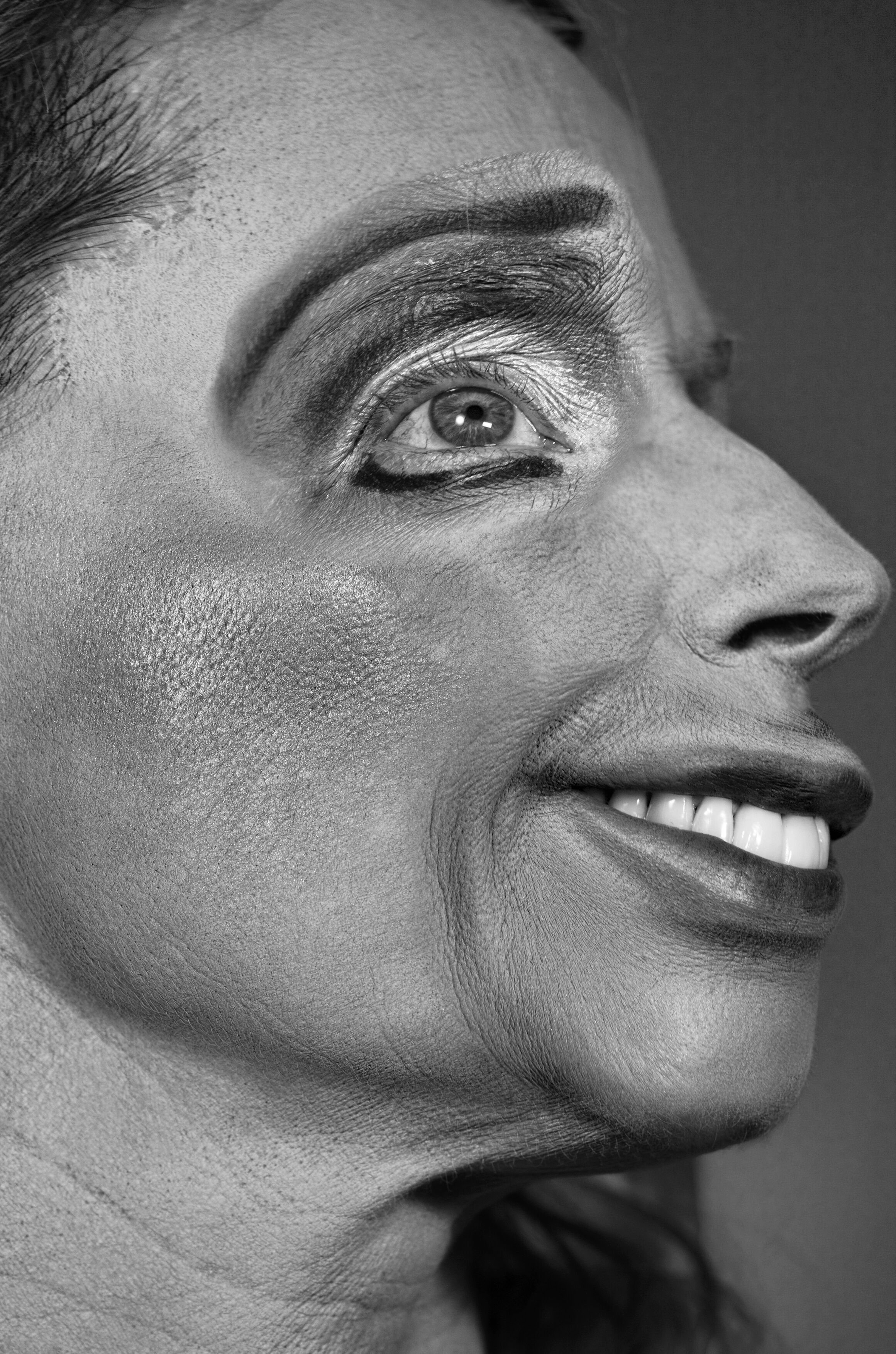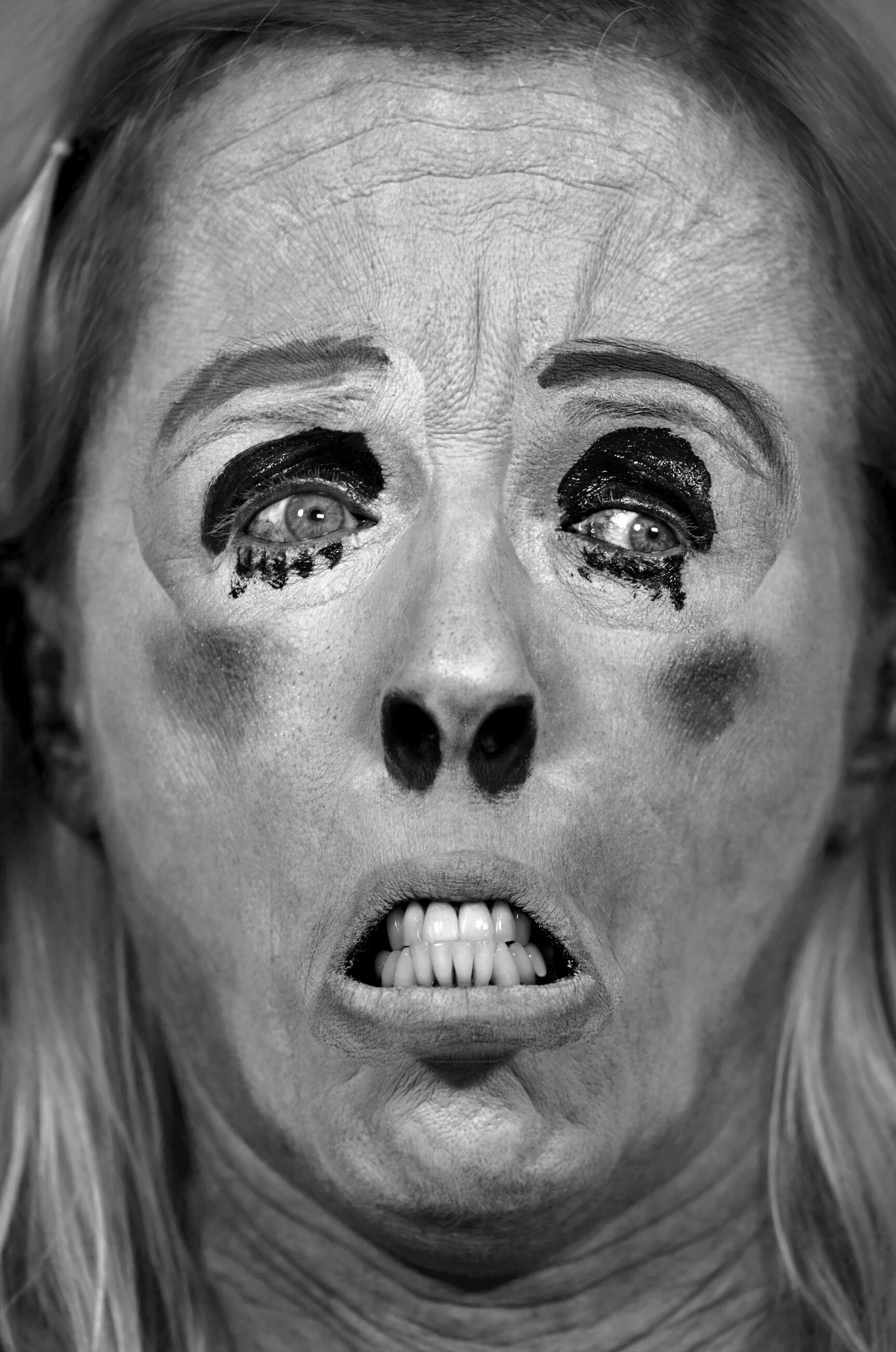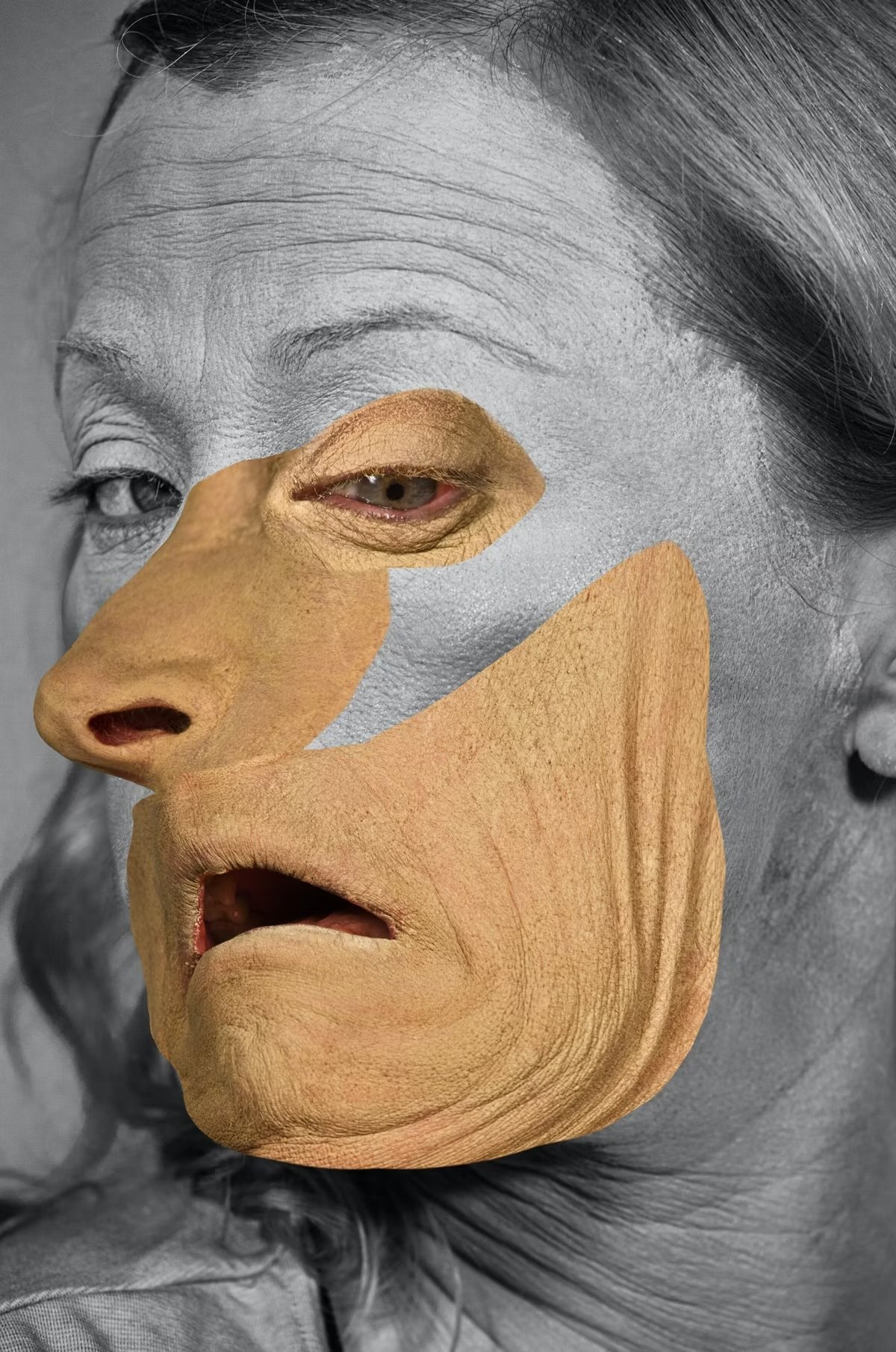After half-a-century, Cindy Sherman is still photographing herself, showing how media (and now AI) splinters our identity
Cindy Sherman has been self-photographing and role-playing, in order to show the splintering of selves in modern society, since the mid-seventies. The pictures above are from her latest show in New York’s Hauser & Wirth. As Creative Review reports:
To create the fragmented figures, who simultaneously laugh, wince, smirk and grimace at the viewer, Sherman photographed isolated sections of her own eyes, nose, lips, skin, hair, and ears, and then cut, pasted and warped them. Some of the works also draw on images she started working on in 2010 but subsequently abandoned. The end result is a group of unsettling, bordering on grotesque, portraits of women.
The growing influence of AI also looms large in the show. While other high-profile artists have been damning of the technology’s infringement of the traditional domain of artists, in extracts from Sherman’s diary published in the exhibition’s catalogue, she notes how face apps (many of which use AI) directly influenced her use of Photoshop to create the series. She’s also been experimenting with a series of AI-generated images on Instagram, which have been met with a mixed response despite the fact she has said she doesn’t consider them to be artworks.
…But the artist has often been ahead of the curve when it comes to technology. In 2017, she began using Instagram to upload portraits that use several face-altering apps to highlight the dissociative nature of the social media platform from reality.
Given the growing ubiquity of airbrushing, face-tuning apps and de-ageing filters, Sherman’s latest series can be seen as a comment on the splintered and superficial parts of ourselves that we often choose to display to the rest of the world nowadays.
More here. And from a New York Times profile:
The photographs induce a surprisingly urgent search for something, anything, that feels nakedly real — perhaps a sliver of skin up by the hairline, just below the edge of a wig, or around the mouth. Of course, it’s all flesh, some of it so enlarged that pores gape and pancake makeup glistens like wet cement.
The various directions in which features point, and particularly the misaligned eyes, invoke a very specific kind of human desire: It seems we quite insistently want to know where to direct our attention when looking at another person. The hunt can feel almost embarrassingly intense.
And for her, manipulating the features is sheer play, with “all my favorite eyes and noses, wigs and fabric.” No question, there is pleasure in this work, and also some plain silliness, both in short supply these days. But inevitably the question arises, are we laughing with aging women, or at them?
To put the question another way, how personal are these photos? “I feel like I’m preparing myself for it,” Sherman said of growing old. “This is what you’re going to get, so get used to it. It’s coming. It’s hanging over all of our heads.”
More here. And below, a still from Sherman’s late 70s work, Untitled Film Stills:

